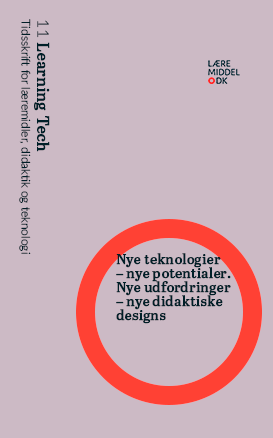Digitale artefakter i matematikundervisningen
Understøttelse af elevernes computationelle- og matematiske forståelse
DOI:
https://doi.org/10.7146/lt.v7i11.128231Resumé
Computationel tankegang er et centralt begreb, når der tales om teknologiinddragelse i folkeskolen. Denne artikel adresserer brugen af di- gitale artefakter til at understøtte elevernes computationelle og matematiske forståelse og undersøger, hvilke potentialer der kan opstå. Dermed sætter artiklen fokus på et forskningsfelt, som er relativt uudforsket, og hvor der fortsat mangler empirisk viden. Formålet er at undersøge lærerens brug af digitale artefakter i didaktiske iterative cyklusser. Teorien om semiotisk mediering bruges til indholdsanalyse af brugen af digitale artefakter på tværs af de didaktiske cyklusser, da denne teori er velegnet til at belyse tegn på mediering. Det empiriske datagrundlag består af en case, som inkluderer observationer fra undervisningen fra tre 3. klasser på samme skole. Fokus er centreret om den ene klasses arbejde med micro:bits som digitalt artefakt. Undersøgelsens resultater peger på, at lærerens mediering, og op-mærksomhed på dertil hørende tegn, har afgørende betydning for elevernes anvendelse, forståelses- og brugskompetencer indenfor computationel tankegang i matematikundervisningen.
Downloads
Publiceret
Citation/Eksport
Nummer
Sektion
Licens
Forfatterne og Læremiddel.dk.
Må ikke bruges kommercielt.


